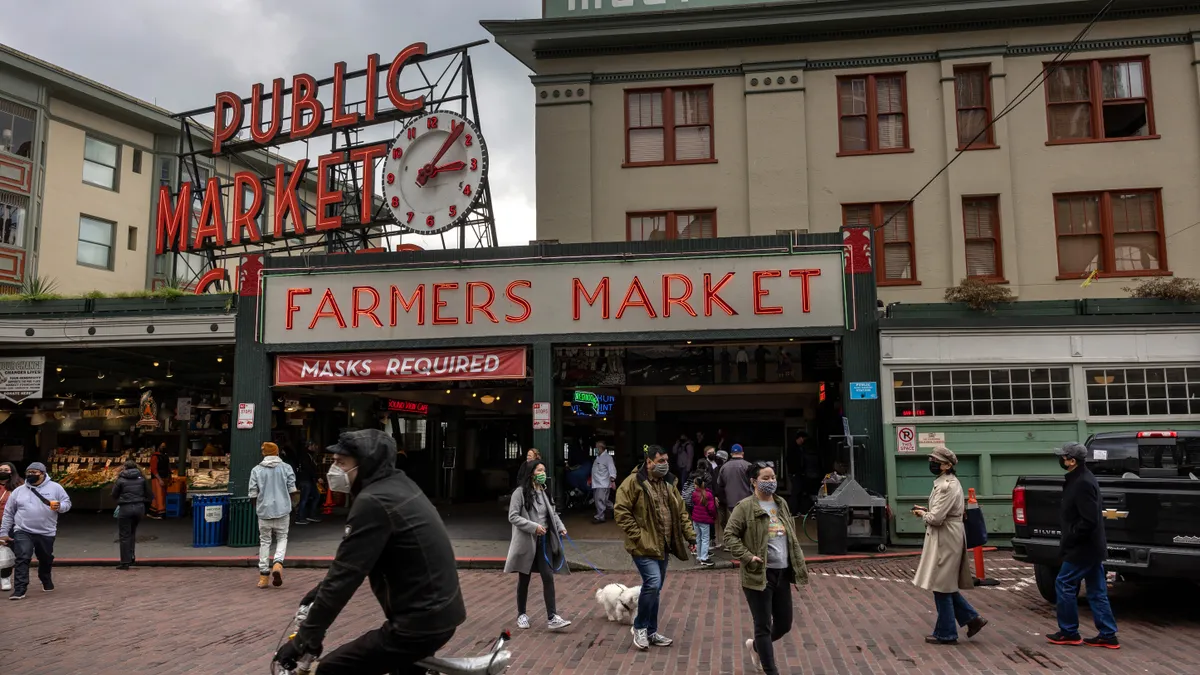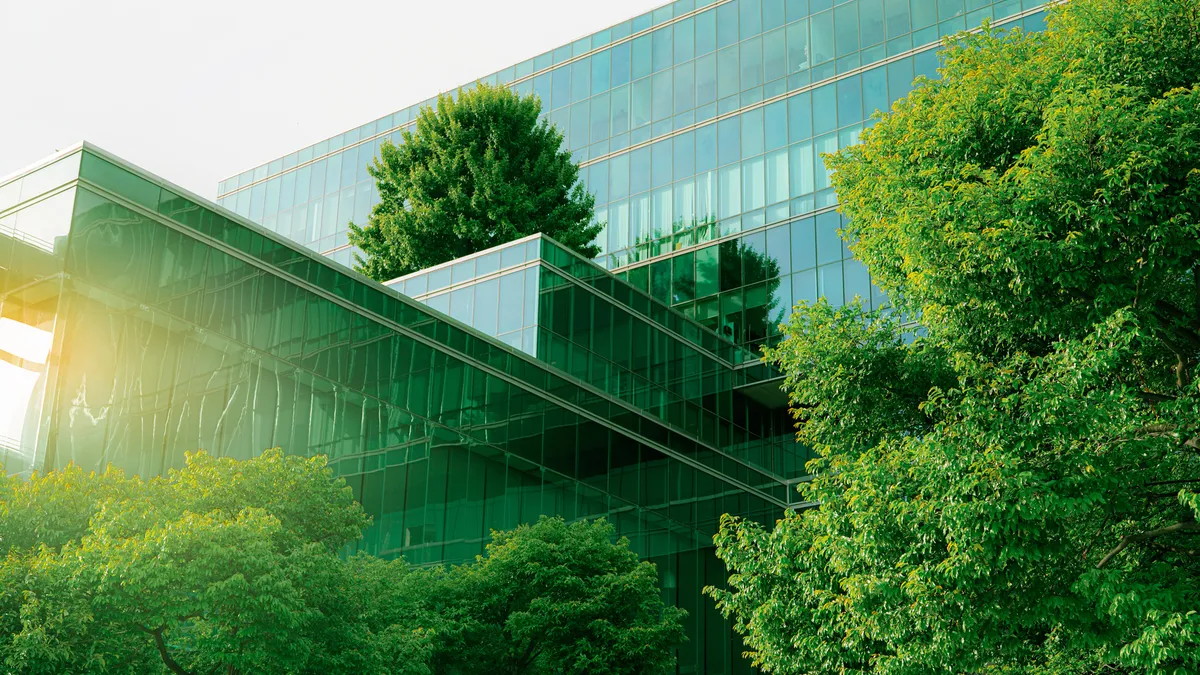In Spokane, Washington, work patterns have changed at City Hall downtown. Many employees come into the office one or two days a week or leave early to finish their work day at home, said Spencer Gardner, the city’s planning director.
This is happening at workplaces across downtown Spokane, Gardner added. “That translates to less people on the street, less foot traffic outside of stores, fewer people visiting restaurants,” he said.
Spokane is trying to revive its downtown, and it’s not alone. On the other side of the state, Seattle also has plans to rebuild downtown from vacant office buildings into a thriving mixed-use hub.
Here are three approaches Washington’s two largest cities are taking to accomplish those goals.
Adapt land use to new work patterns and affordable housing needs.
In the last 10 years, Spokane’s downtown has taken on more population per acre than anywhere else in the city, Gardner said.
At the same time, affordable housing has become harder to find. The typical Spokane home value increased by 70% from 2018 to 2023, according to Zillow data cited by The Spokesman-Review newspaper. Meanwhile, the number of people experiencing homelessness has gone up. A 2023 point-in-time count found 36% more unhoused residents in Spokane County compared with a year prior.
In 2023, Spokane launched an initiative to incentivize developers to build affordable housing on vacant land and parking lots downtown. Gardner said the city hopes to use vacant downtown office buildings to further accommodate the growing need for housing.
The reduced demand for office space presents opportunities nationwide as well as in Spokane. Public-private partnerships are crucial when repurposing vacant office space, said Michael Burayidi, professor of urban planning at Ball State University.
“The public sector has to, in many cases, be the lead in helping to decrease the cost to private businesses,” Burayidi said.
States could also step in. Gardner said the Washington state legislature needs to adopt more incentives for office-to-residential conversions.
“The cities that figure out how to lower the barriers for that are going to end up better off,” he said.
Think beyond housing to advance other drivers of downtown activity.
Although like many cities, Seattle is exploring office-to-residential conversions, it is also considering uses such as arts and culture.
“We also want to … think about beyond housing,” said Markham McIntyre, director of Seattle’s Office of Economic Development.
Arts and culture are key to having a downtown where people want to live and visit, but these resources struggled during the COVID-19 pandemic, said Meghan Ashlin Rich, professor of sociology at the University of Scranton. Now, the recovery brings some hope.
Before the pandemic, a growing amount of public space downtown was being privatized, Rich said, but the office vacancies could create space for lesser-resourced groups working in arts and culture.
Seattle has other uses in mind as well. Its life sciences sector is always short on lab space, McIntyre said, and it could be easier to adapt offices for educational facilities than for housing. He said Seattle and the University of Washington are discussing opening an education center downtown where workers could learn artificial intelligence skills.
Downtowns also need to focus on creating public spaces where people can congregate, Burayidi said. These include parks, plazas and indoor facilities.
Not everything will be forever. Burayidi said cities will likely create temporary public space, observe how people interact with it and make it permanent if it works well.
McIntyre said Seattle is using shorter-term activations such as cultural events to bring people downtown. The city is also implementing longer-term activations, including making half of the street at the famous Pike Place Market pedestrian-only. In late 2023, the city also created a permanent court downtown for pickleball, the official state sport of Washington. McIntyre said Seattle will continue to look at these permanent changes.
Envision the retail of the future.
This isn’t the first time downtowns have gone through transformation. As businesses left for the suburbs in the 1960s and 1970s, some civic leaders decided to compete with suburban shopping malls by building their own malls downtown, Burayidi said.
They didn’t work, he said. In the decades since, most downtown malls have closed. Now he sees a national effort to fix the struggling downtown malls left behind by bringing them outdoors.
“[If] shoppers are able to go in and get out quickly, then you'll be able to attract a lot more people than if you have enclosed malls,” he said. “What we're seeing across the country now is an attempt to open up these shopping malls in the downtowns.”
Burayidi also sees these malls becoming mixed-use, adding housing or offices to the retail.
Seattle is looking at the future of retail beyond malls, and how physical and online shopping can coexist, McIntyre said. Its Seattle Restored program works with local entrepreneurs and artists to open pop-up shops and art installations in vacant storefronts downtown. Now these pop-ups are becoming longer-term leases, he said.
“Coming out of the pandemic, we really have an opportunity to try to think about who [downtown is] for,” he said, “and try to rethink how we use our space and activate our streets and really make it a safe, welcoming, interesting place where people want to be.”


















